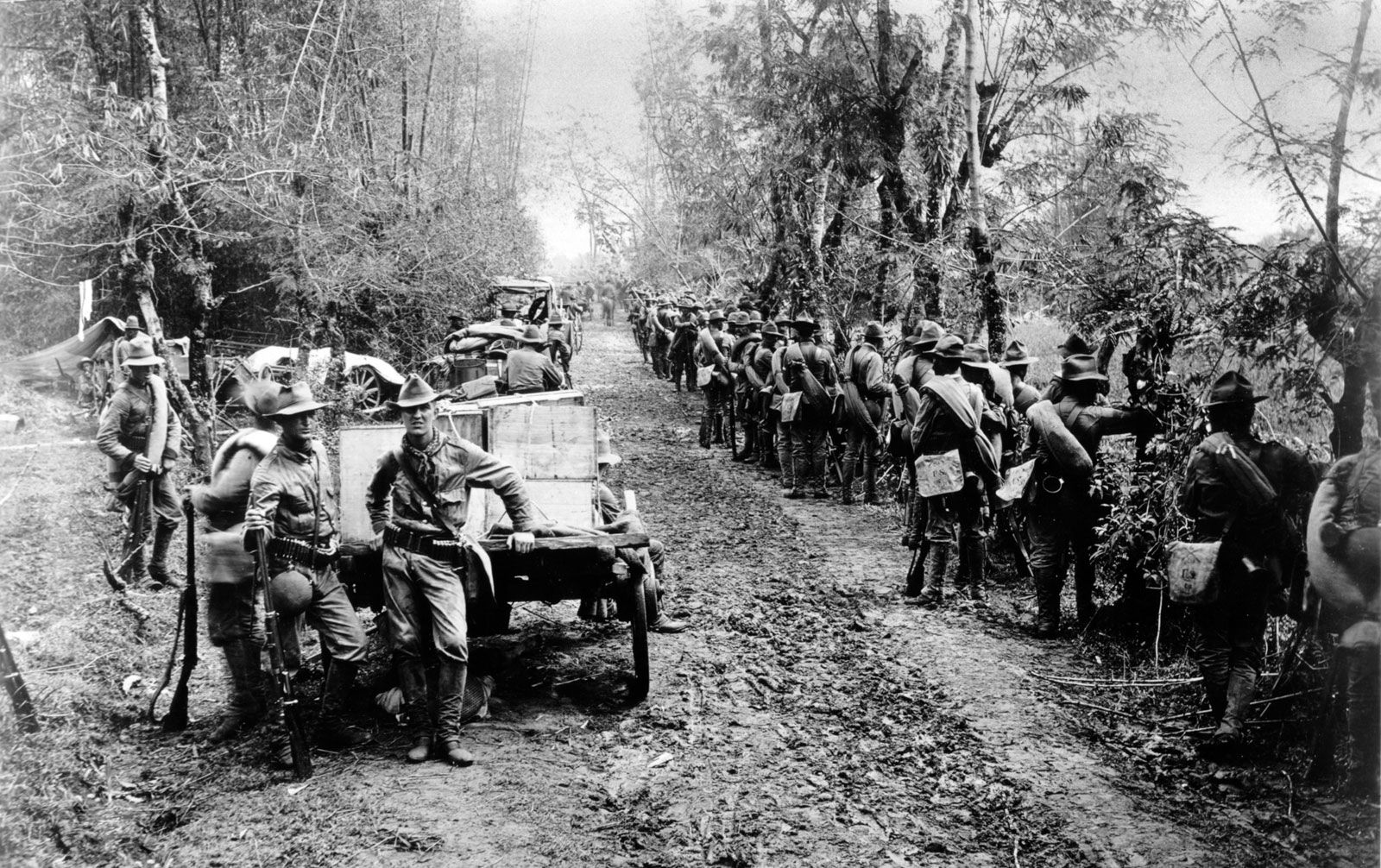The Philippine-American War ignited after the United States assumed control of the Philippines post-Spanish-American War. Filipino revolutionaries, who had been fighting for independence from Spanish colonial rule, found themselves facing a new colonial power. The tension escalated when the U.S. did not recognize the Philippine Republic established by revolutionaries led by Emilio Aguinaldo, culminating in armed conflict that began on February 4, 1899.
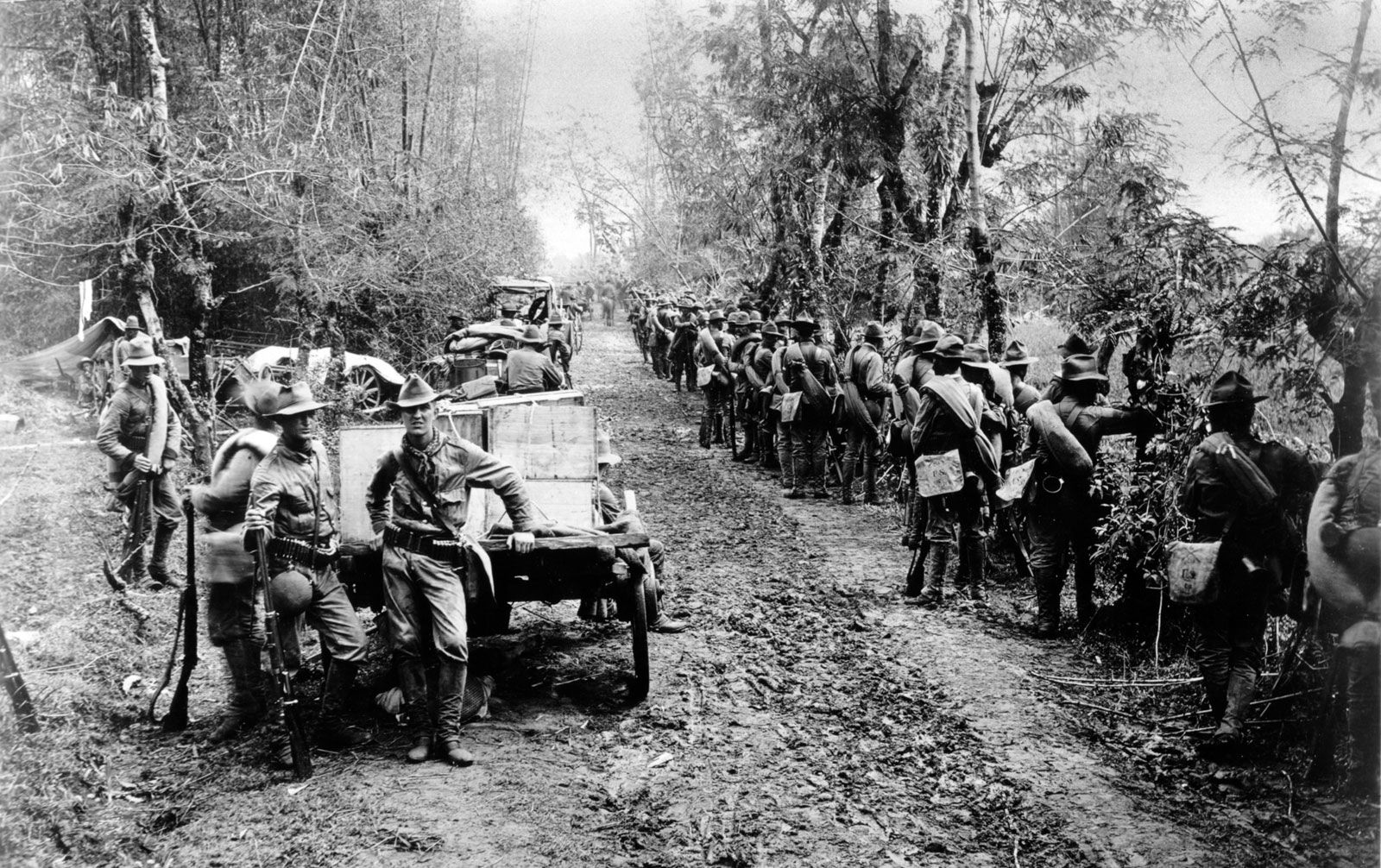
U.S. troops in the Philippines during the conflict. Credit: Britannica
Key battles during the war included the Battle of Manila and later engagements that showcased the guerrilla tactics of the Filipino forces. The U.S. military initially engaged in traditional warfare but later adapted to counter the guerrilla strategies employed by the Filipinos, leading to a protracted and bloody conflict that lasted until 1902, though some fighting continued sporadically for years after.
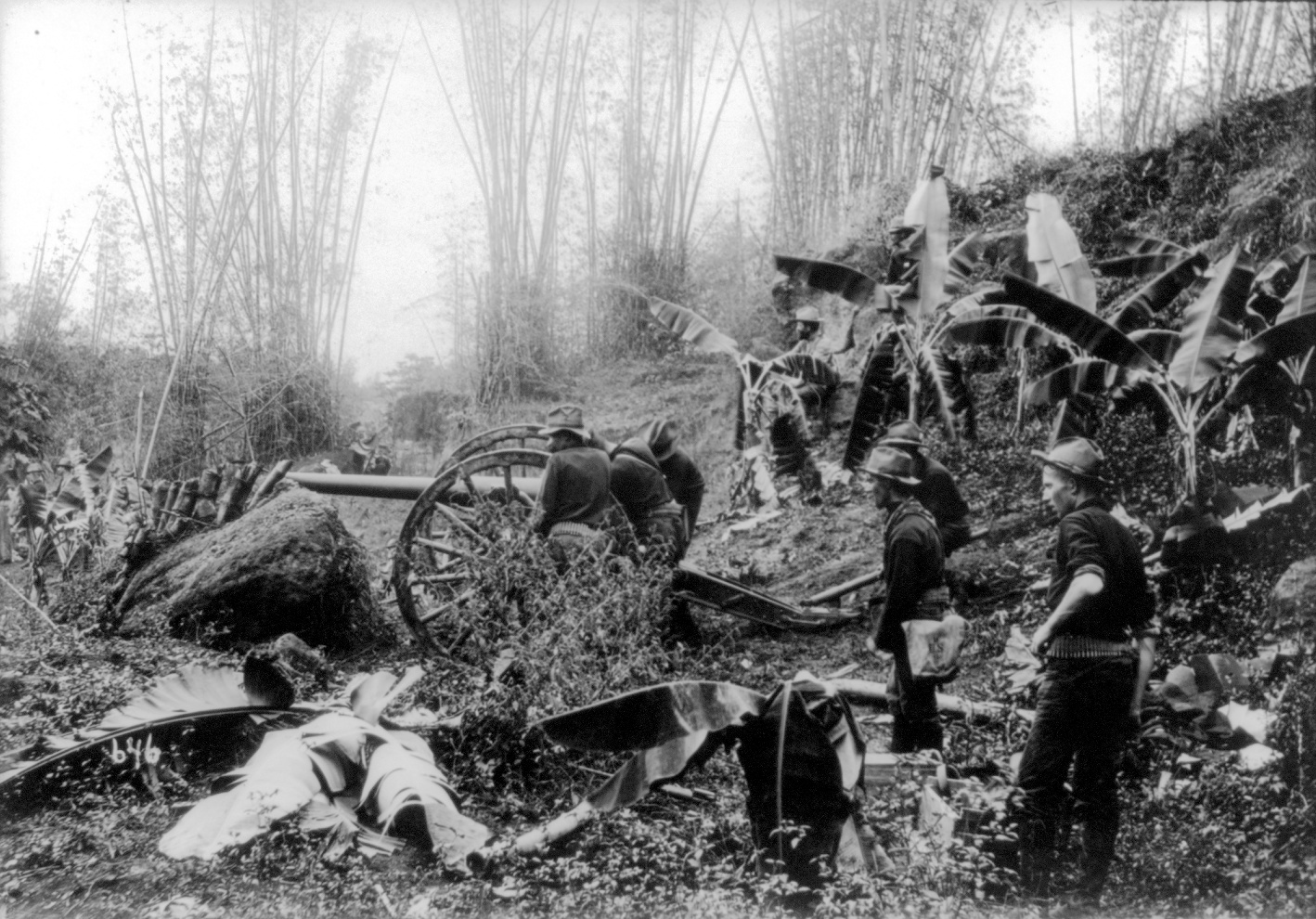
Manila during the height of the conflict in 1899. Credit: Wikimedia Commons
Emilio Aguinaldo emerged as a central figure in the Filipino resistance, declaring independence and leading military campaigns against U.S. forces. On the U.S. side, prominent figures included President William McKinley, General Frederick Funston, and General Jacob Smith, whose aggressive tactics would lead to controversies and court-martials due to their brutal handling of the insurgency.
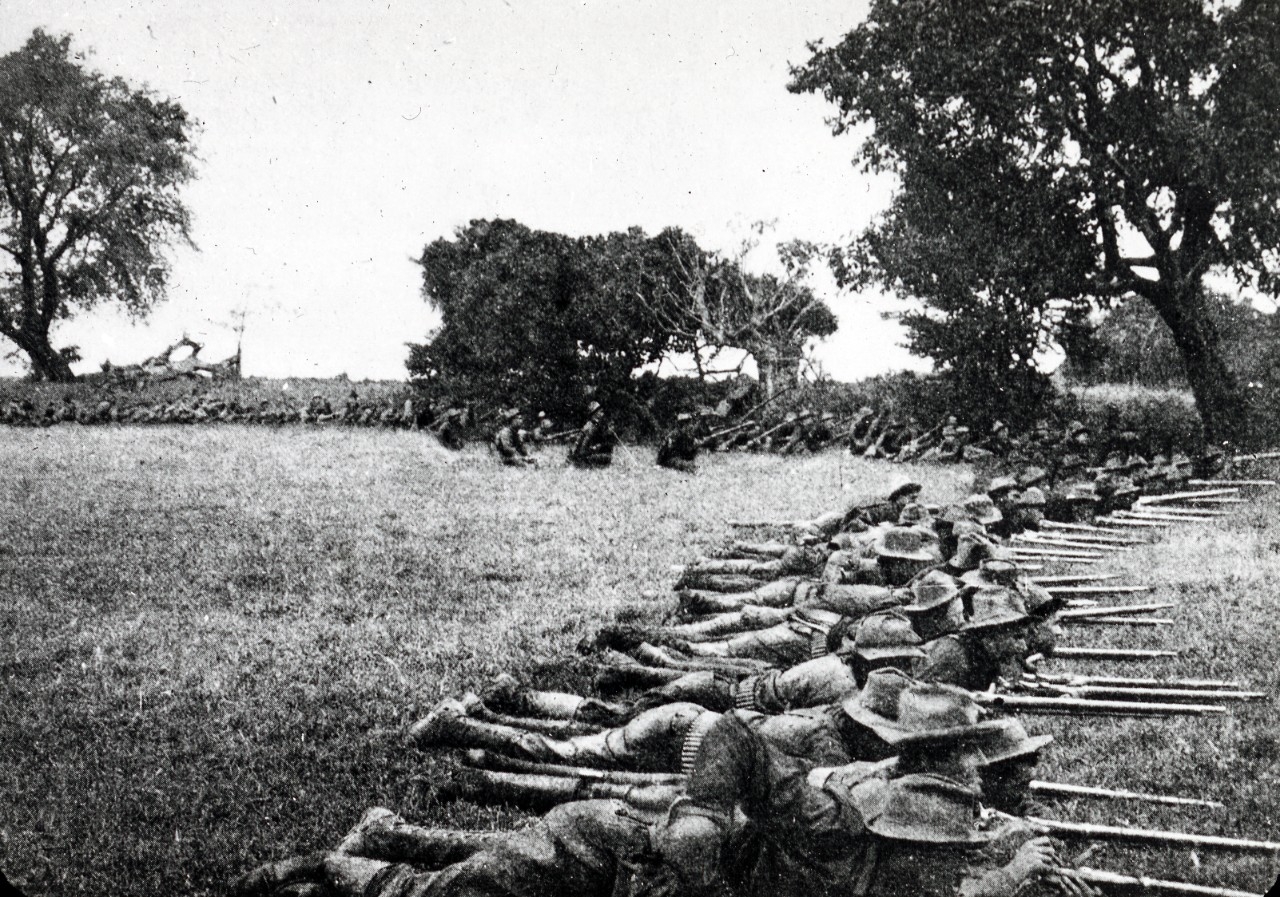
U.S. Naval forces during the Philippine Insurrection. Credit: U.S. Naval History and Heritage Command
The war resulted in significant casualties, with estimates of 20,000 Filipino combatants and over 200,000 civilians perishing due to combat, famine, and disease. American losses included approximately 4,300 troops, with many succumbing to disease. The war solidified U.S. control over the Philippines, leading to its governance and eventual transition towards independence in 1946.
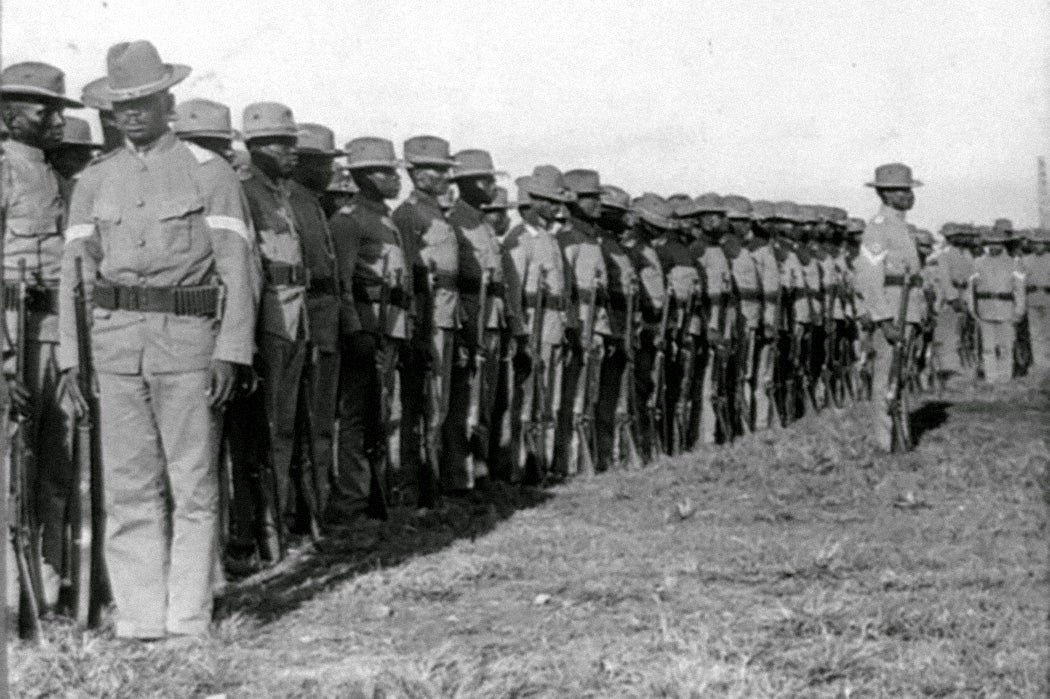
African American soldiers serving in the Philippines. Credit: JSTOR Daily
References:
Encyclopedia Britannica – Philippine-American War – link
US Naval History and Heritage Command – link
JSTOR Daily – The Jim Crow Army – link
Categories: American History, Asian History, Colonial History, Military History, War History
Tags: American Imperialism, Colonial Wars, Emilio Aguinaldo, Military History, Philippine-American War, William McKinley
Religion: Mixed
Country of Origin: Philippines, United States
Topic: Military History
Ethnicity: Mixed

